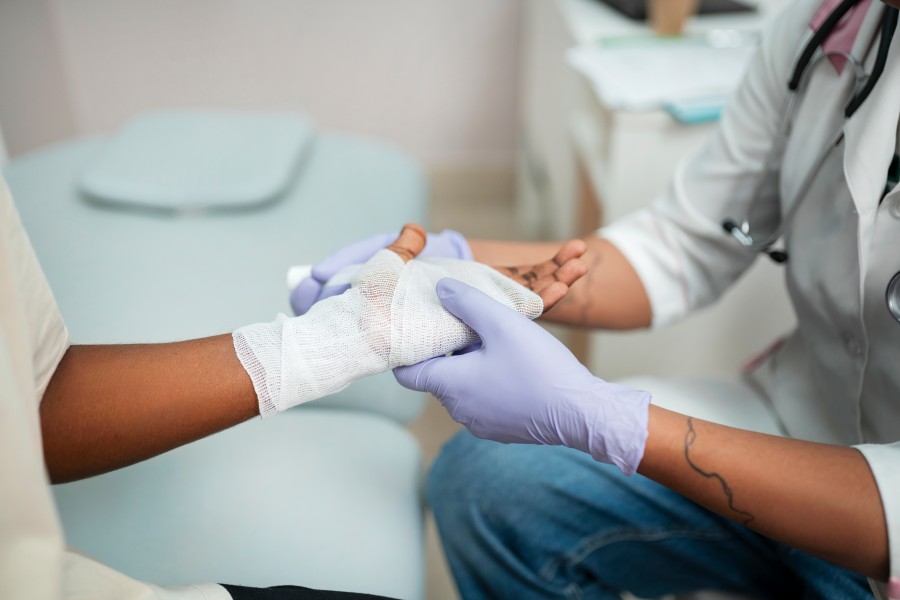Accidents happen when we least expect them – whether you’re cooking dinner, working in the garden, or engaging in sports activities. Cuts and lacerations are among the most common injuries that bring patients to urgent care facilities, and knowing when and where to seek proper treatment can make the difference between quick healing and potential complications.
At our urgent care clinic, we specialize in providing immediate, professional treatment for wounds of all types and severities. Our experienced medical team is equipped with the latest tools and techniques to ensure your injury receives the appropriate care it needs for optimal healing.
Understanding Cuts and Lacerations
A cut, also known as a laceration, is a break in the skin caused by a sharp object or trauma. These injuries can range from minor surface scratches to deep wounds that penetrate through multiple layers of tissue. The severity of a cut depends on several factors, including its depth, length, location on the body, and the cleanliness of the wound.
Shallow cuts typically affect only the top layer of skin (epidermis) and may heal on their own with proper home care. However, deeper lacerations that extend into the dermis or subcutaneous tissue often require professional medical attention to prevent infection, ensure proper healing, and minimize scarring.
When to Seek Urgent Care for Cuts and Lacerations
While minor cuts can often be treated at home, certain situations warrant immediate medical attention. You should visit our urgent care clinic if your cut exhibits any of the following characteristics:
- Depth and Severity: If you can see fat, muscle, or bone through the wound, or if the cut is deeper than a quarter-inch, professional treatment is necessary. Gaping wounds that don’t stay closed when you gently press the edges together typically require sutures.
- Location Matters: Cuts on the face, hands, feet, or joints require special attention due to the complexity of these areas and the importance of maintaining function and appearance. Facial lacerations, in particular, benefit from expert care to minimize scarring.
- Bleeding Control: If bleeding doesn’t stop after 10-15 minutes of direct pressure, or if blood is spurting from the wound, immediate medical care is essential. This may indicate damage to an artery or vein.
- Signs of Contamination: Wounds caused by dirty or rusty objects, or cuts that contain debris that cannot be easily cleaned out, need professional cleaning and possible antibiotic treatment.
- Size and Appearance: Lacerations longer than half an inch, wounds with jagged or irregular edges, or cuts that occurred from crushing injuries often heal better with professional intervention.
Our Comprehensive Treatment Approach
When you arrive at our urgent care clinic with a cut or laceration, our medical team follows a systematic approach to ensure optimal care:
- Initial Assessment: We begin with a thorough examination of your wound, assessing its depth, length, location, and potential for complications. We also review your medical history, including tetanus vaccination status and any medications that might affect healing.
- Wound Cleaning and Preparation: Proper wound cleaning is crucial for preventing infection. We use sterile saline solutions and appropriate antiseptics to thoroughly clean the wound and surrounding area, removing any debris or contamination.
- Pain Management: We provide appropriate pain relief measures, including local anesthesia when necessary, to ensure your comfort during treatment.
- Closure Techniques: Depending on the nature of your wound, we may use various closure methods, including traditional sutures, skin adhesive, or surgical staples. Our experienced providers select the most appropriate technique based on the wound’s characteristics and location.
- Dressing and Protection: We apply appropriate dressings to protect the wound and promote healing while providing detailed instructions for home care.
Advanced Wound Care Technologies
Our clinic utilizes modern wound care technologies to optimize healing outcomes. We stock various types of suture materials, from absorbable sutures that dissolve naturally to non-absorbable options for areas requiring longer-term support. For appropriate wounds, we also offer skin adhesives that provide excellent cosmetic results with minimal discomfort.
Preventing Complications and Promoting Healing
Proper wound care doesn’t end when you leave our clinic. We provide comprehensive aftercare instructions tailored to your specific injury, including guidelines for keeping the wound clean and dry, signs of infection to watch for, and when to return for follow-up care.
Infection prevention is a critical component of our treatment approach. We assess each patient’s risk factors and may prescribe prophylactic antibiotics when appropriate. We also ensure that tetanus vaccinations are current, as this is essential for preventing serious complications from contaminated wounds.
Follow-Up Care and Monitoring
Depending on the severity and location of your laceration, we schedule appropriate follow-up appointments to monitor healing progress and remove sutures when indicated. Our team provides clear guidance on activity restrictions and when you can safely return to normal activities.
Why Choose Our Urgent Care for Wound Treatment
Our urgent care clinic offers several advantages for cut and laceration treatment. We provide immediate access to care without the need for appointments, experienced medical professionals trained in wound management, and comprehensive treatment options all under one roof. Our facility maintains extended hours to accommodate injuries that occur outside typical office hours, and we accept most insurance plans to make quality care accessible.
We understand that accidents are stressful, and our compassionate team works to provide efficient, thorough care in a comfortable environment. From the moment you arrive until your wound has fully healed, we’re committed to supporting your recovery journey.
When you’re dealing with a cut or laceration, don’t leave healing to chance. Visit our urgent care clinic for professional evaluation and treatment that promotes optimal healing while minimizing the risk of complications and scarring.
For patients with more severe injuries that may require specialized surgical intervention, our urgent care team can provide immediate stabilization and coordinate referrals to appropriate specialists when necessary. Additionally, if you’re experiencing other urgent medical concerns alongside your wound, our comprehensive urgent care services can address multiple health issues during your visit. Visit https://scclittleelm.com/our-services/acute-illness-and-injury-care/ to know more.
Frequently Asked Questions (FAQs)
Q: How do I know if my cut needs stitches?
A: Generally, cuts longer than ½ inch, deeper than ¼ inch, with gaping edges that don’t stay closed, or located on areas of high tension like joints typically require sutures for proper healing.
Q: When should I get a tetanus shot for a cut?
A: You should receive a tetanus booster if your last vaccination was more than 5 years ago for dirty wounds, or more than 10 years ago for clean wounds, or if you’re unsure about your vaccination history.
Q: How long should I keep my wound covered?
A: Most wounds should remain covered and dry for the first 24-48 hours, then can be gently cleaned daily; however, specific instructions depend on your wound type and location, which our medical team will explain during your visit.
Q: What are the signs of wound infection I should watch for?
A: Warning signs include increased redness extending beyond the wound edges, warmth, swelling, pus or unusual discharge, red streaking, fever, and increasing pain after the initial 24-48 hours.
Q: Can I shower with stitches?
A: Generally, you should keep stitches dry for the first 24-48 hours; after that, brief showers may be acceptable while avoiding direct water pressure on the wound, but always follow your specific care instructions provided by our medical team.

